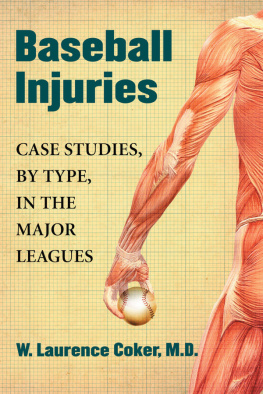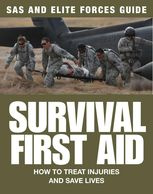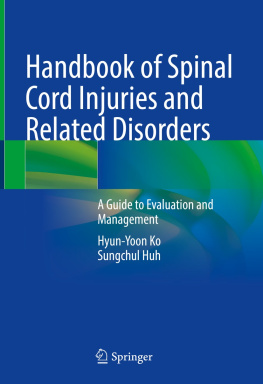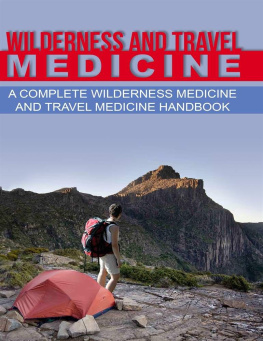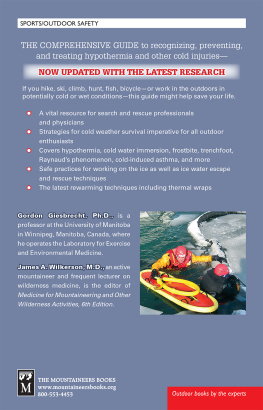Discover more Outdoor Sports books, eBooks, and expert advice to plan your next adventure!
From bow hunting to paddling to hiking the Appalachian Trail, Stackpoles Outdoor Sports books give you the tools you need to experience the great outdoors to its fullest.
Visit
Stackpole Books Outdoor Sports webpage
Text copyright 2012 National Outdoor Leadership School
Illustrations copyright 2006 by Joan Safford
All rights reserved.
Published by
STACKPOLE BOOKS
5067 Ritter Road
Mechanicsburg, PA 17055
www.stackpolebooks.com
All rights reserved, including the right to reproduce this book or portions thereof in any form or by any means, electronic or mechanical, including photocopying, recording, or by any information storage and retrieval system, without permission in writing from the publisher. All inquiries should be addressed to Stackpole Books, 5067 Ritter Road, Mechanicsburg, PA 17055.
Printed in the United States of America
10 9 8 7 6 5 4 3 2 1
ISBN 978-0-8117-1193-7
Cover photo by Brad Christensen
The print edition of this title was manufactured to FSC standards using paper from responsible sources
NOLS books are printed by FSC certified printers. The Forest Stewardship Council encourages responsible management of the worlds forests.
Library of Congress Cataloging-in-Publication Data
Schimelpfenig, Tod, 1954
NOLS wilderness medicine / Tod Schimelpfenig ; illustrated by Joan Safford.
p. cm.
A Publication of the National Outdoor Leadership School and Stackpole Books.
Previous editions had title: NOLS wilderness first aid.
Includes bibliographical references and index.
ISBN-13: 978-0-8117-3306-9
ISBN-10: 0-8117-3306-8
eISBN: 978-0-8117-4988-6
1. First aid in illness and injury. 2. Outdoor medical emergencies. I. Schimelpfenig, Tod, 1954 . NOLS wilderness first aid. II. National Outdoor Leadership School (U.S.) III. Title. IV. Title: Wilderness medicine.
RC88.9.O95S35 2006
616.0252dc22
2006010138
To the students at NOLS.
I hope this text helps you to be better outdoor leaders.
To all NOLS instructors,
who on a daily basis teach and practice first aid
and safety in the wilderness and are the source of the
practical experience that is the foundation of this text.
To Betsy, Sam, Dave, Mark, and Emily
for their support and patience during
the time I devoted to this project.
To the St. Michaels College Rescue Squad,
where I first learned quality patient care.
APPENDIX
A | QUICK-REFERENCE INDEX |
Abdominal injury,
Abdominal pain,
Acute mountain sickness,
Acute stress reactions,
Allergic reactions,
Anemones,
Ankle sprains,
Appendicitis,
Asthma,
Bee stings,
Brain injury,
Broken teeth,
Burns, chemical,
Burns, electrical (lightning strikes),
Burns, inhalation,
Burns, radiation (sunburn),
Burns, thermal,
Chest pain,
Cone shells,
Dehydration,
Depression,
Diabetes,
Diarrhea,
Dislocations of joints,
Drowning,
Dysmenorrhea,
Ectopic pregnancy,
Epididymitis,
Fever,
Fire coral,
Flail chest,
Flulike illness,
Foodborne illness,
Foreign body in the eye,
Fractures of bones,
Frostbite,
Gastroenteritis,
Hantavirus,
Headache,
Heart disease,
Heat cramps,
Heat exhaustion,
Heatstroke,
Hemorrhoids,
Hemothorax,
High-altitude cerebral edema (HACE),
High-altitude pulmonary edema (HAPE),
Hyperglycemia,
Hyperventilation syndrome,
Hypoglycemia,
Hyponatremia,
Hypothermia,
Insect stings,
Jellyfish,
Kidney stones,
Knee pain,
Lightning injury,
Mania,
Marine spine envenomations,
Mittelschmerz,
Muscle strains,
Nausea,
Nematocyst sting envenomations,
Nonfreezing cold injury,
Open chest wound,
Oral infection,
Patient assessment,
Peritonitis,
Pneumonia,
Pneumothorax,
Poison, ingested,
Poison, inhaled,
Poison, injected,
Poison ivy, oak, and sumac,
Portugese man-of-war,
Psychosis,
Pulmonary embolism,
Respiratory distress,
Rib fracture,
Scorpion fish,
Scorpion stings,
Sea cucumbers,
Sea urchins,
Secondary amenorrhea,
Seizures,
Shock,
Snake bites,
Snow blindness,
Sore throat,
Spider bites,
Spinal cord injury,
Starfish,
Stingrays,
Subconjunctival hemorrhage,
Suicidal behavior,
Sun bumps,
Sunburn,
Tendinitis,
Tension pneumothorax,
Testicular torsion,
Tick bites,
Toothache,
Ulcers,
Unresponsive states,
Urinary tract infection,
Vaginal infection,
Vomiting,
Waterborne illness,
Wound infection,
Wounds, abrasions,
Wounds, amputations,
Wounds, avulsions,
Wounds, bruises,
Wounds, contusions,
Wounds, lacerations,
Wounds, puncture,
Traditional first aid programs are designed for the common medical problems, telephones, ambulances, and hospitals of urban areas. In wilderness medicine we take these practices and make them relevant to the medical problems we experience in the outdoors and the available equipment, transportation, and communication systems. Wilderness medicine training has become the standard for outdoor professionals, and the relevant training for the outdoor recreationist. When the first edition of NOLS Wilderness First Aid appeared on bookshelves in 1991, the concept of wilderness medicine seemed clear. Today, its very definition, at least in North America, has blurred.
In 1991, the traditional definition of medical care in remote locations, with improvised gear and challenging environmental conditions, applied to many wilderness areas. Today, technology and the growing popularity of outdoor pursuits has managed to effectively shrink many wilderness areas. Multiday evacuations with improvised litters are less common, largely replaced by helicopters. Communication technology now offers the chance of quick transport from remote areas to urban medical care, and many wilderness visitors have come to expect such service. In fact, much of what we call wilderness medicine is really a simple extension of modern emergency medical services into the wilderness by cell phone and helicopter instead of into a city by telephone and ambulance.
This doesnt mean wilderness medicine is obsolete. There are still areas where a radio or a cell phone will not work and where quick rescue service is not available. Weather and terrain can still hamper rescue. True wilderness medicine means we dont have the advantages of modern medicine. We dont have access to medications, diagnostic equipment and procedures, rapid transport, and specialty care. In reality, a medical emergency in the wilderness is a grave situation.
For over forty years, students and instructors on NOLS courses in remote locations around the world have received top-notch wilderness medical training in the outdoors. This book is an extension of those years of practical experience. It uses the insights and experience of NOLS instructors, who among their many talents must occasionally assess patients and make decisions about medical treatment and urgency of transport. Using the experience of our staffwho volunteer as members of the Fremont County (Wyoming) Search and Rescueand our experience with NOLS instructors leading expeditions and evacuating people from all over the world, we can learn how skilled outdoors people, who are not medical professionals, make decisions. We can use our NOLS database of field risk management incidentsthe most extensive in the industryto look at what decisions wilderness leaders make. We gain insights into how and what we should teach and how to craft our decisions. The treatment and evacuation guidelines in this text are consistent with the same guidelines that guide the decisions of NOLS instructors in the field.


